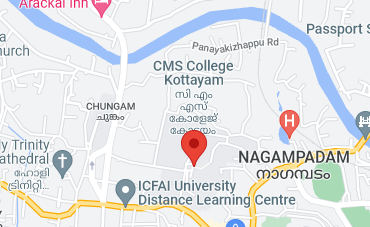(Semester – IV)
CH4B01 – Basic Organic Chemistry -I
Credits – 3 (54 hours)
Aim
To give the students a thorough knowledge about the chemistry of some selected functional groups with a view to develop proper aptitude towards the study of organic compounds and their reactions
Objectives
To enable the students-
To learn the chemistry of alcohols, phenols, carboxylic acids, derivatives of Carboxylic acids, Sulphonic acids, carbonyl compounds, poly nuclear hydrocarbons, active methylene compounds and Grignard reagents.
To understand and study Organic reaction mechanisms.
- Hydroxy compounds (8 Hrs)
Monohydric alcohols: Classification, physical properties–hydrogen bonding-distinction between primary ,secondary and tertiary alcohols- Ascent and decent in alcohol series Dihydric alcohols: Oxidative cleavage – Lead tetra acetate, Periodic acid- Pinacol – Pinacolone rearrangement –mechanism
Phenols – Acidity of phenols- effects of substituents – comparison of acidity with alcohols
Preparation and uses of nitrophenols, picric acid, catechol, resorcinol and quinol Mechanisms of Reimer –Tiemann reaction, Lederer- Mannase reaction, Fries rearrangement
References
- T. Morrison and R. N. Boyd, ‘Organic Chemistry’, 6th Edition – Prentice Hall of India, (Chapters-6,24)
- L. Finar Organic Chemistry -, 6th Edition. Vol.- I, Pearson. (6,8,11,26)
- K. Jain and S.C. Sharma ‘Modern Organic Chemistry’, 3rd Edition, Vishal Publishing Company Co. (Chapters-19,20)
- S. Tewari and N K Vishnoi ‘Organic Chemistry’, 3rd Edition, Vikas Publishing House(Chapters-16,17)
Further reading
- S. Bahl ‘Advanced organic Chemistry’, S. Chand.
- John Mc Murry, ‘Organic Chemistry’ – Vth Edition -Thompson Asia Pvt Ltd
- N. Pillai ‘Organic Chemistry’ Universities Press.
- Ethers and Epoxides (3 Hrs)
Synthesis and Reactions of Epoxides
Cleavage of ether linkages by HI- Ziesels method of estimation of alkoxy groups-Claisen rearrangement –mechanism.
References
- T. Morrison and R.N Boyd, ‘Organic Chemistry’, 6th Edition – Prentice Hall of India. (Chapter-6,)
- L. Finar Organic Chemistry, 6th Edition. Vol.- I, Pearson. (chapter 7and p.1126)
- K. Jain and S.C. Sharma ‘Modern Organic Chemistry’, 3rd Edition, Visal Publishing Company Co. (Chapter-21)
- S. Tewari and NK Vishnoi ‘Organic Chemistry’, 3rd Edition, Vikas Publishing House (Chapter-18)
- S. Bahl ‘Advanced organic Chemistry’, S. Chand
Further reading
- S. Bahl ‘Advanced organic Chemistry’, S. Chand.
- John Mc Murry, ‘Organic Chemistry’ – Vth Edition -Thompson Asia Pvt Ltd
- N. Pillai ‘Organic Chemistry’ Universities Press.
- Aldehydes and Ketones (12 hrs) Structure and reactivity of the carbonyl group – acidity of alpha hydrogen. Comparative studies of -aldehydes and ketones – aliphatic and aromatic aldehydes – formaldehyde and acetaldehyde-Mechanism of nucleophilic additions to carbonyl groups with special emphasis on Claisen , Claisen-Schmidt, Benzoin, Aldol, Perkin and Knoevenagel condensations. Condensation with ammonia and its derivatives. Wittig reaction. Mannich reaction.-Addition of Grignard reagents. Oxidation and reduction of aldehydes and ketones – Baeyer-Villiger oxidation-Cannizzaro’s reaction, Meerwein-Pondorof Verley, Clemmensen, Wolff-Kishner, LiAIH4 and NaBH4 reductions (mechanisms expected). Use of acetal as protecting group.
References
- T. Morrison and R.N. Boyd, ‘Organic Chemistry’, 6th Edition – Prentice Hall of India. (Chapter-18)
- L. Finar, Organic Chemistry 6th Edition, Vol.- I, Pearson. ((Chapters-8,27)
- K. Jain and S.C. Sharma ‘Modern Organic Chemistry’, 3rd Edition, Visal Publishing Company Co. (Chapter-22)
- S Tewari and NK Vishnoi ‘Organic Chemistry’, 3rd Edition, Vikas Publishing House (Chapter-19)
- S. Bahl ‘Advanced organic Chemistry’, S. Chand
Further reading
- Paula Y. Bruice, ‘Organic Chemistry’ – 3rd Pearson Education Asia.
- John Mc Murry, ‘Organic Chemistry’ – Vth Edition -Thompson Asia Pvt Ltd
- C .N. Pillai‘OrganicChemistry’UniversitiesPress.
- Carboxylic and Sulphonic acids (18 hours)
Structure of carboxylate ion- effects of substituents on acid strength of aliphatic and
aromatic carboxylic acids- ascent and descent in fatty acid series- Hell-Volhard-
Zelinsky reaction -Mechanism of decarboxylation
Preparationoffunctionalderivativesofcarboxylicacids- acidchlorides,esters
anhydrides and amides – their importance
Methods of formation and chemical reactions of anthranilic acid,cnnamic acid, acrylic acid, oxalic acid, malonic acid, citric acid, adipic acid, maleic acid, fumaric acid and coumarin.
Preparation and reactions of benzene sulphonic acid, benzene sulphonyl chloride and otho and para toluene sulphonyl chlorides- uses
References
- T. Morrison and R.N. Boyd, ‘Organic Chemistry’, 6th Edition – Prentice Hall of India. (Chapter-)
- L. Finar Organic Chemistry 6th Edition. Vol.- I, Pearson. (Chapters-9, 25,28)
M.K.Jain and S.C. Sharma ‘Modern Organic Chemistry’, 3rd Edition, Visal Publishing Company Co. (Chapter-22)
- S Tewari and NK Vishnoi ‘Organic Chemistry’, 3rd Edition, Vikas Publishing House (Chapter-20,21,28)
- S. Bahl ‘Advanced organic Chemistry’, S. Chand
Further reading
- K. Bansal, A Textbook of Organic Chemistry, New Age International.
- John Mc Murry, ‘Organic Chemistry’ – Vth Edition -Thompson Asia Pvt Ltd
- N.Pillai‘Organic Chemistry,Universities Press.
- 5. Carbonic acid derivatives (3 Hrs)
Preparation- reactions and structure of urea, thiourea and semi carbazide manufacture of uea- preparation and basicity of guanidine.
References
- T. Morrison and R.N Boyd, ‘Organic Chemistry’, 6th Edition – Prentice Hall of India.
- L .Finar Organic Chemistry -, 6th Edition. Vol.- I, Pearson. (Chapter-16)
- K. Jain and S.C. Sharma ‘Modern Organic Chemistry’, 3rd Edition, Visal Publishing Company Co. (Chapter-)
- S. Tewari and N. K. Vishnoi, ‘Organic Chemistry’, 3rd Edition, Vikas Publishing House (Chapter-20)
- S. Bahl ‘Advanced organic Chemistry’, S. Chand
Further reading
- K. Bansal, A Textbook of Organic Chemistry, New Age International.
- John Mc Murry, ‘Organic Chemistry’ – Vth Edition -Thompson Asia Pvt Ltd
- N. Pillai‘Organic Chemistry’ Universities Press.
- Grignard and related compounds (3 Hrs)
Grignard reagents-formation, structure and synthetic applications, alkyl lithium, Reformatsky reaction
References
- T. Morrison and R.N. Boyd, ‘Organic Chemistry’, 6th Edition – Prentice Hall of India. (Chapter-)
- L. Finar Organic Chemistry -, 6th Edition. Vol.- I, Pearson. (Chapter-15)
- K.Jain and S.C. Sharma ‘Modern Organic Chemistry’, 3rd Edition, Visal Publishing Company Co. (Chapter-)
- S. Tewari and N. K. Vishnoi, ‘Organic Chemistry’, 3rd Edition, Vikas Publishing House (Chapter-27)
- S. Bahl ‘Advanced organic Chemistry’, S. Chand
Further reading
- Paula Y. Bruice, ‘Organic Chemistry’ – 3rd Pearson Education Asia.
- John Mc Murry, ‘Organic Chemistry’ – Vth Edition -Thompson Asia Pvt Ltd
- N. Pillai‘Organic Chemistry’ Universities Press.
- Compounds containing active methylene groups (4 Hrs)
Synthetic uses of malonic ester, acetoacetic ester and cyanoacetic ester. Keto-enol tautomerism of ethyl acetoacetate
Alkylation of carbonyl compounds via enamines.
References
- T. Morrison and R. N. Boyd, ‘Organic Chemistry’, 6th Edition – Prentice Hall of India. (Chapter-)
- L .Finar Organic Chemistry -, 6th Edition. Vol.- I, Pearson. (Chapter-10,13)
- K. Jain and S.C. Sharma ‘Modern Organic Chemistry’, 3rd Edition, Visal Publishing Company Co. (Chapter-)
- S. Tewari and N. K. Vishnoi ‘Organic Chemistry’, 3rd Edition, Vikas Publishing House (Chapter-32)
- S. Bahl ‘Advanced organic Chemistry’, S. Chand
Further reading
- John Mc Murry, ‘Organic Chemistry’ – Vth Edition -Thompson Asia Pvt Ltd
- N. Pillai,‘Organic Chemistry”, Universities Press.
- Poly nuclear hydrocarbons and their derivatives (3hrs)
Classification –reactions and structure of naphthalene, anthracene and phenanthrene. Elementary idea of naphthyl amines, naphthols, naphthaquinone and anthraquinone.
References
- L. Finar Organic Chemistry , 6th Edition. Vol.- I, Pearson. (Chapter-29)
- K. Jain and S. C. Sharma ‘Modern Organic Chemistry’, 3rd Edition, Visal Publishing Company Co. (Chapter- 16)
- S Tewari and NK Vishnoi ‘Organic Chemistry’, 3rd Edition, Vikas Publishing House (Chapter- 25)
- S. Bahl ‘Advanced organic Chemistry’, S. Chand.
Further reading
- N. Pillai ‘Organic Chemistry’ Universities Press.
- K. Bansal, A Textbook of Organic Chemistry, New Age International.
- John Mc Murry, ‘Organic Chemistry’ – Vth Edition -Thompson Asia Pvt Ltd.
- H. Pine ‘Organic Chemistry’,McGraw Hill
- K.Bansal,’A ‘Textbook of Organic Chemistry’,New Age International Publishers
Practical CH4 B01 -Qualitative Organic Analysis
Credit 1 (36 hrs)
- Determination of Physical constants of solids and liquids
- Study of the reactions of the following functional groups: reducing and non-reducing sugars, phenol, tertiary amines, amide, nitro and halogen compounds diamide , anilide, polynuclear hydrocarbons
- Systematic analysis of the following organic compounds containing one functional group and characterization with its physical constant and a derivative :- reducing and non reducing sugars, phenol, tertiary amines, amides, diamide, nitro and halogen compounds, anilides and polynuclear hydrocarbons.
(Minimum ten compounds to be analysed)
References
- I. Vogel, ‘A Text Book of Practical Organic Chemistry’, Longman. ‘Vogel’s Textbook of Practical Organic Chemistry’ Pearson Education
- G.Mann and B. C. Saunders, ‘Practical Organic Chemistry’ 4th edn, Pearson Education.
- K. Ahluwalia and S. Dhingra ‘ ComprehensivePractical Organic Chemistry’ Universities Press.

